Boston cream donuts are my favorite. Fluffy homemade doughnuts filled with creamy vanilla pastry cream, and topped with rich chocolate ganache – this combination of flavors is simply unbeatable. These donuts are really easy to make at home and taste so good and decadent!
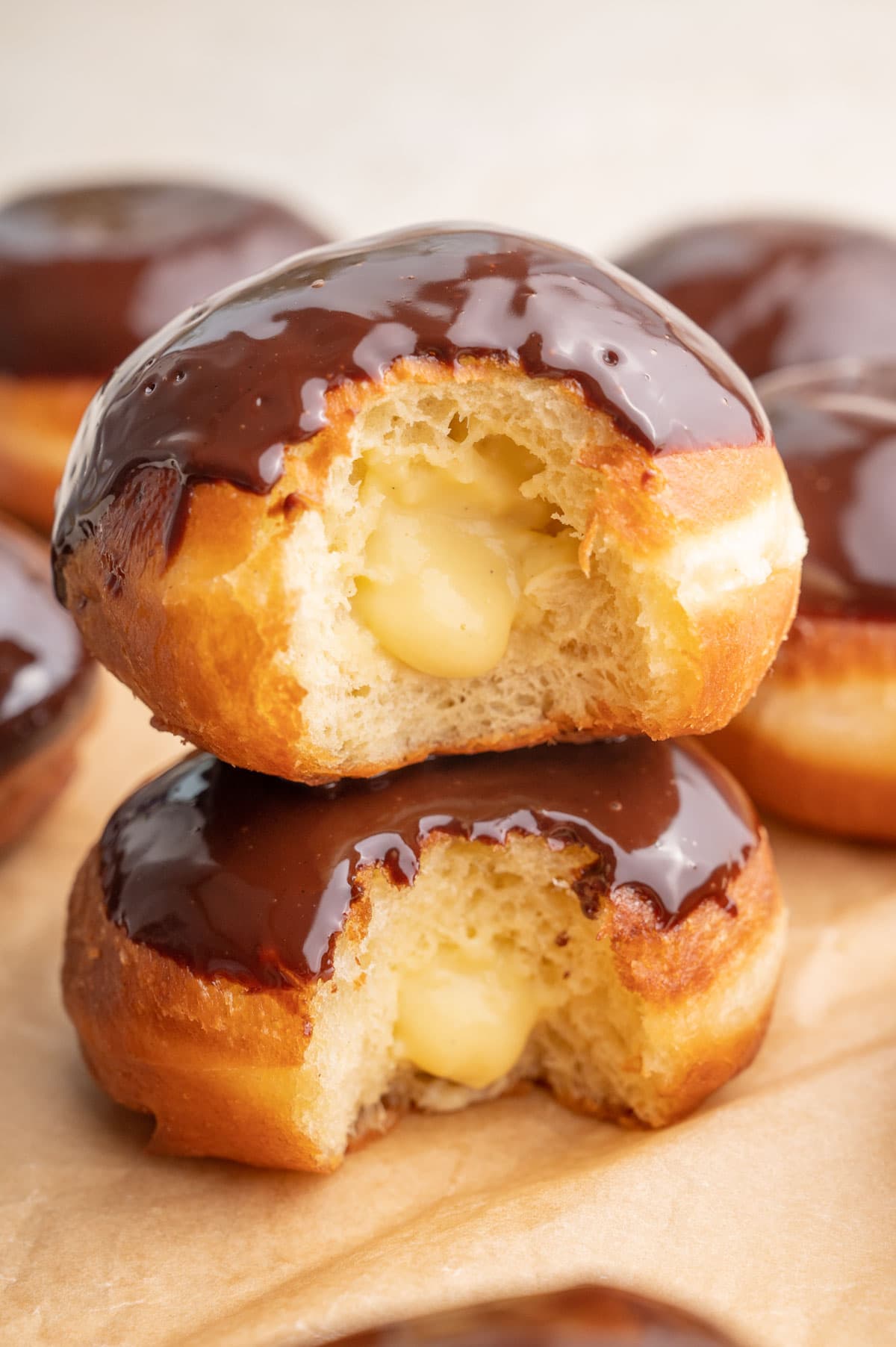
Ingredients
Below you will find information about the ingredients and how to prepare the recipe. For the measurements and detailed instructions scroll down to the printable recipe card.
Here´s what you need to make doughnut dough (you can use this recipe for any type of doughnuts! you can also use my similar pączki or Krapfen dough recipe):
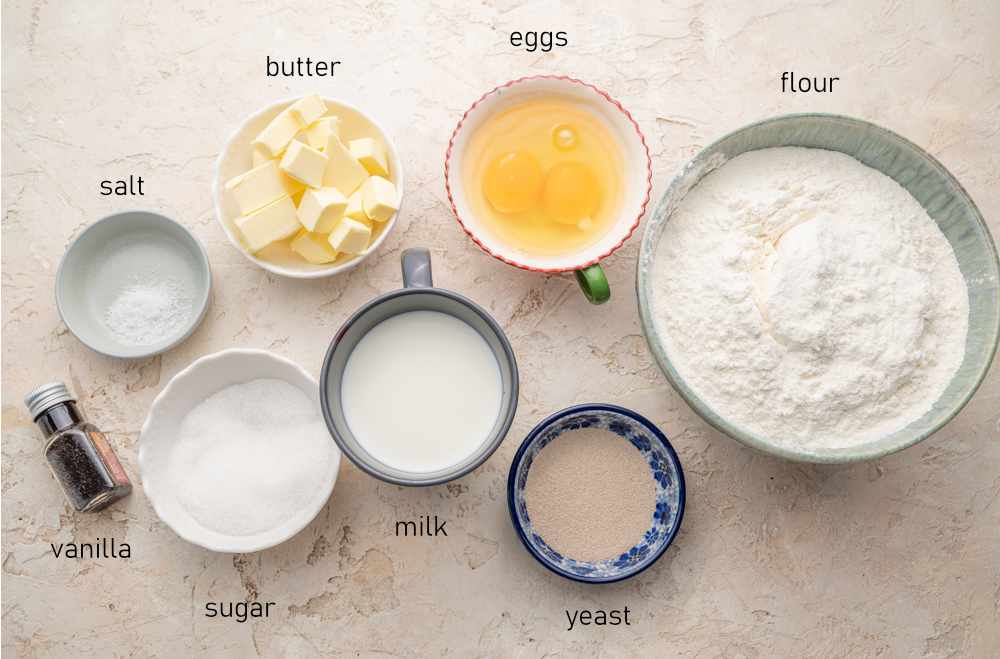
- all-purpose flour
- eggs – you could also swap them for egg yolks if you have them (1 egg for 2 egg yolks) or add some additional egg yolks for a richer dough
- whole milk
- butter
- instant yeast
- vanilla extract
- sugar – don´t be tempted to add more sugar or your doughnuts will get brown too quickly in the oil
- salt
Here´s what you need for vanilla pastry cream (you can use this recipe is many different recipes – for example: Boston cream pie, eclairs, profiteroles and many more!)
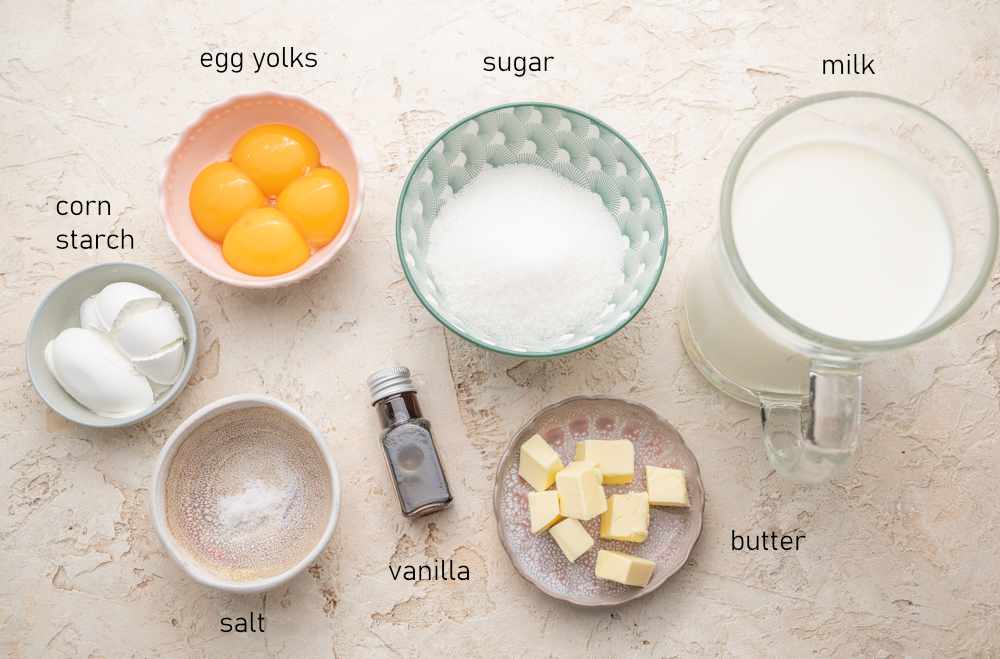
- whole milk
- egg yolks – you could add more egg yolks (5-6) for a richer result
- corn starch – thickens the cream
- vanilla extract/vanilla paste or vanilla beans – the cream with taste great with both
- butter
- sugar
- salt – every sweet recipe needs a tiny amount of salt!
You can make the pastry cream 1-3 days in advance!
For the chocolate ganache you will need:
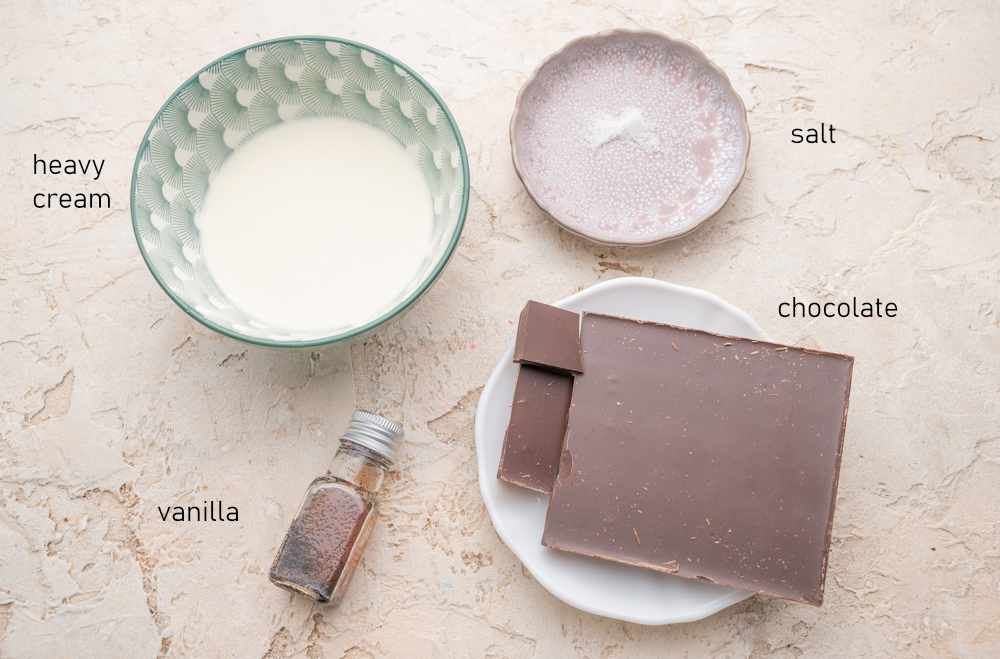
- chocolate – I used 1/4 of milk chocolate and 3/4 of bittersweet chocolate but you can use just bittersweet chocolate or just semi-sweet chocolate
- heavy cream
- vanilla – for more flavor
- pinch of salt – to balance the sweetness
How to make Boston Cream Donuts step by step
The whole process of making doughnuts is shown on the video in this recipe post for pączki (Polish donuts – they are very similar to this recipe! take a look if you need a visual for the doughnuts making process).
Make the doughnut dough
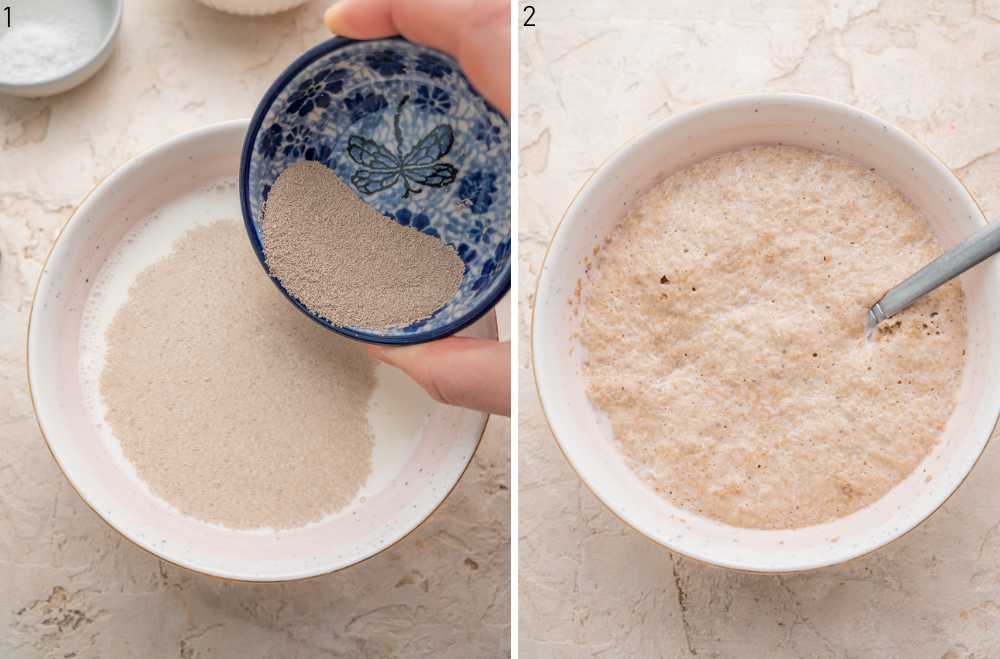
STEP 1+2: Warm up the milk to 100-110°F (38-43°C), add sugar and yeast. Leave for about 5-10 minutes or until you see foam on top of the mixture (a sign the yeast is working).
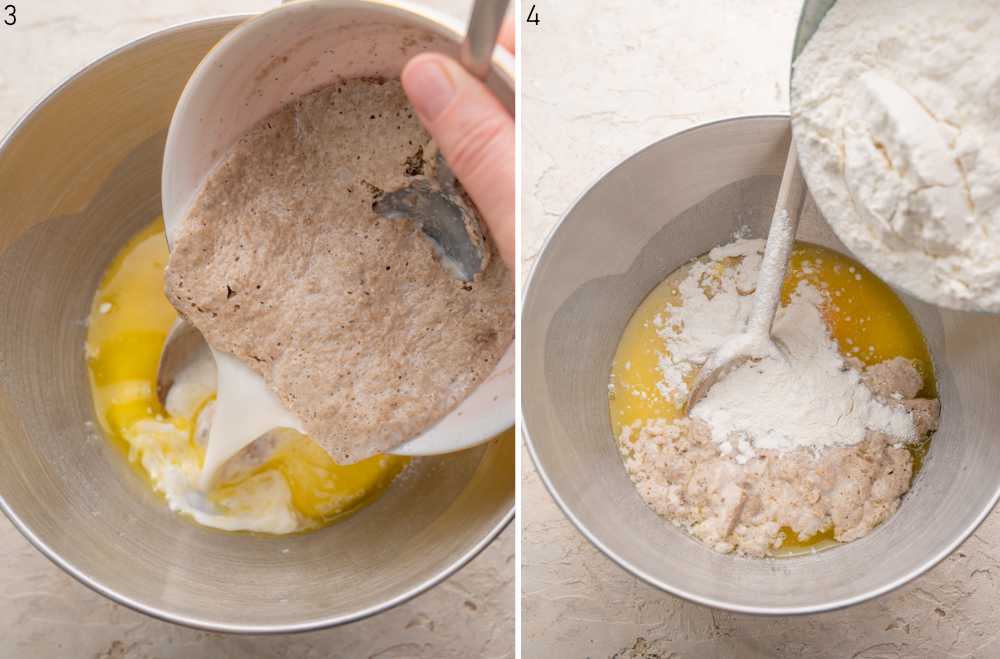
STEP 3: Add butter, eggs, vanilla extract, and salt to a large bowl, whisk until combined. Add the yeast mixture.
STEP 4: Add the flour.
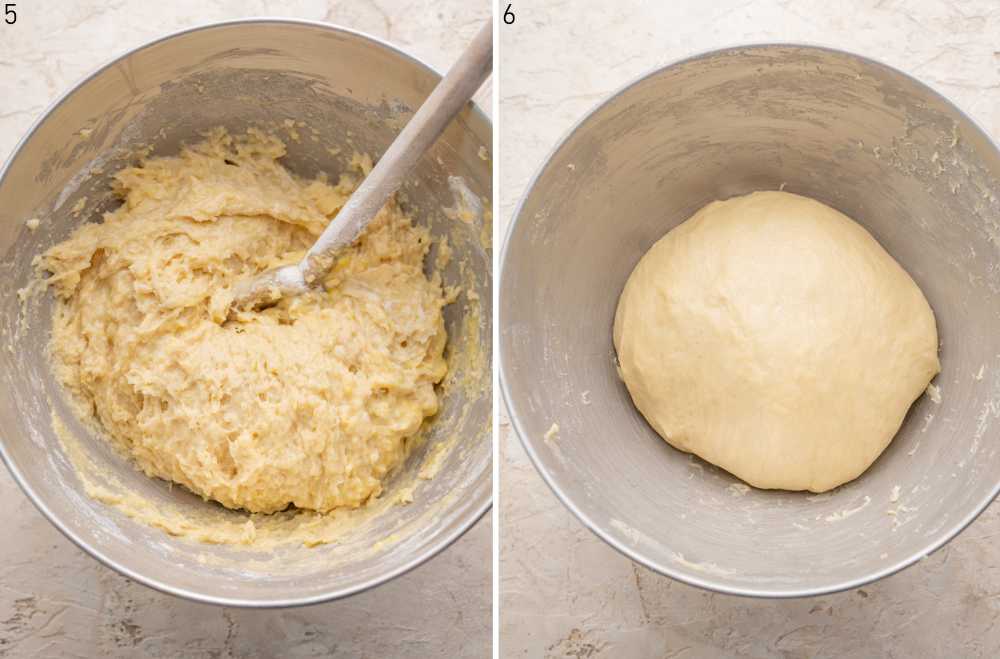
STEP 5: Stir with a spoon until roughly combined.
STEP 6: Knead the dough by hand of with a stand mixer using a dough hook attachment. Knead the dough until soft and elastic. It will take about 7 minutes on speed 2 in Kitchen Aid or about 15 minutes by hand. If kneading the dough by hand you can find the mixture too sticky, try not to add too much additional flour. After 7 minutes of kneading with a mixer, you will see that the dough starts to clean off the sides of the bowl, it will be very soft and just a little bit sticky. Scrape the dough from the sides of the bowl with a spatula and knead it by hand for a minute. After this time the dough should be smooth, soft and should no longer stick to your hands. If you have used a kitchen scale to measure out the flour you can trust the recipe and use the exact amount written in the ingredient list but if you’re using measuring cups you have to assess the texture of the dough and add more flour/liquid if necessary.
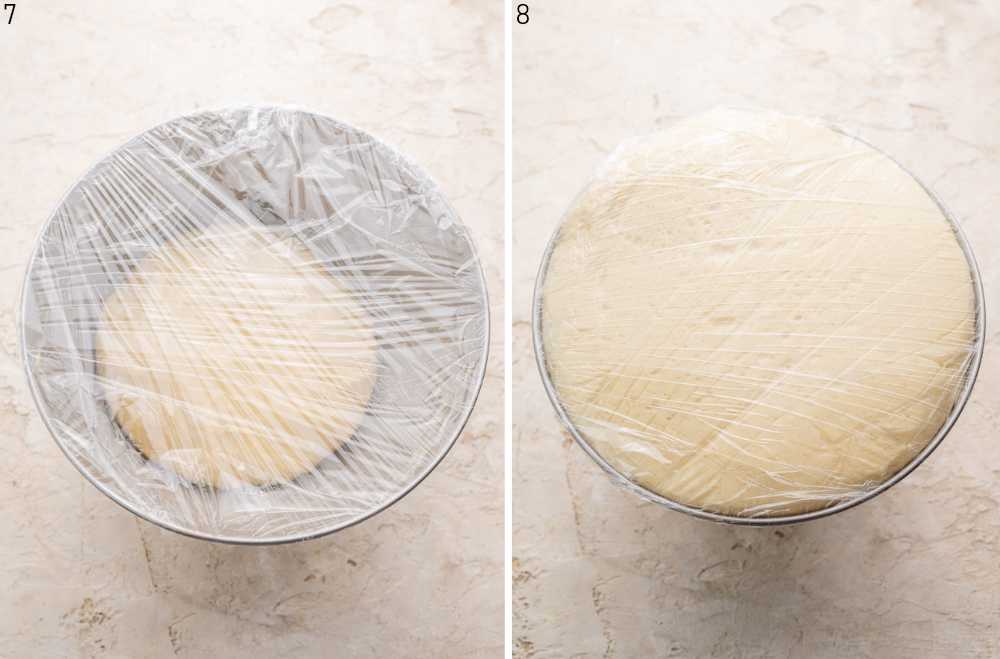
STEP 7: First rise: Form a smooth dough ball, put it back in the bowl (make sure the bowl is large enough for the dough to double or even triple in volume). Coat the bowl and the dough lightly with a small amount of vegetable oil, cover the bowl tightly with plastic foil, and place in a warm place for about 1 to 1 1/2 hours or until doubled in volume (I’m putting it in a turned off oven with a light on).
While the dough is rising, prepare the pastry cream.
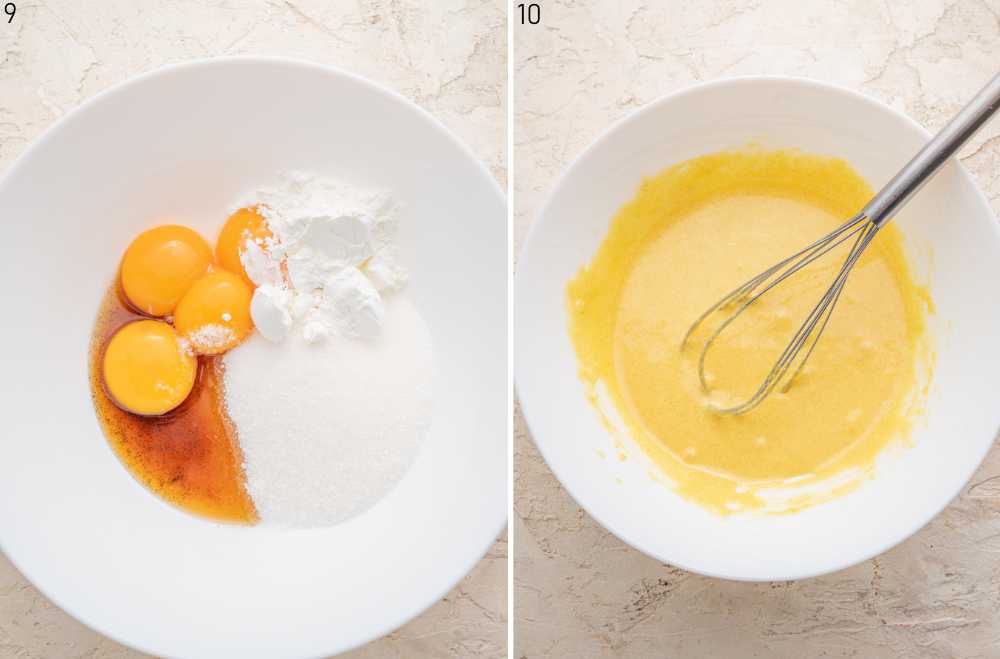
STEP 9: Add the egg yolks, corn starch, vanilla and salt to a medium bowl.
STEP 10: Whisk until thoroughly combined (there should be no lumps of corn starch or egg yolks).
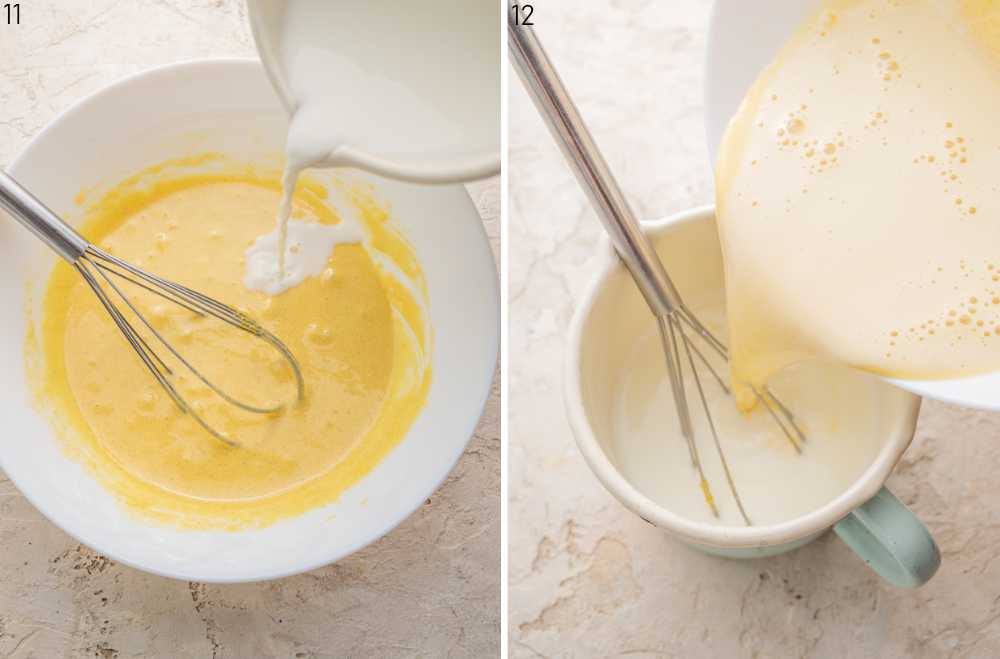
STEP 11: Heat the milk in a medium/large pot until simmering but not boiling.
Pour about 1/2-1cup of the milk to the egg yolk mixture slowly in a thin stream while whisking intensely at the same time.
STEP 12: When the milk is well combined with the egg yolk mixture add it back to the remaining milk in the pot.
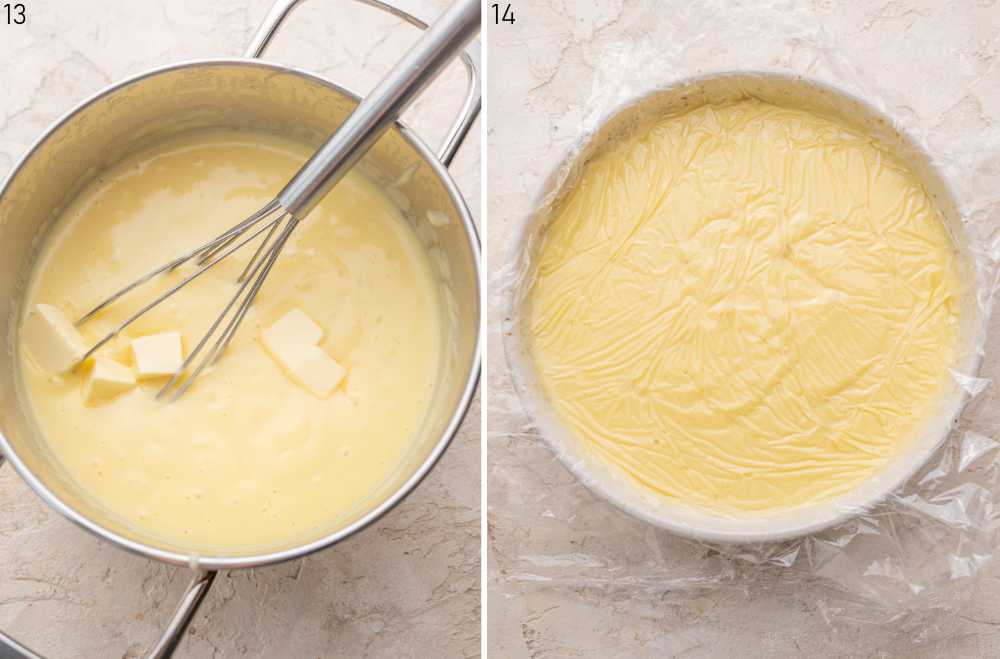
STEP 13: Bring to a boil then cook over medium-low heat for 2-3 minutes, stirring often, or until thickened (the cream will continue to thicken while cooling down).
STEP 14: Transfer the cream to a bowl. Place a plastic foil or a piece of parchment paper on top of the cream – it should touch the surface of the cream – it will prevent forming a skin. Cool down a bit (about 30 minutes) then put in the fridge to cool down completely.
Note – if using vanilla beans and not vanilla extract/paste: Cut the vanilla bean in half lengthwise and scrape out the seeds using the tip of a knife. Add all the beans and vanilla pods to the milk. Warm up the milk to almost a simmer then take of the heat. Let steep for 20 minutes. Discard the vanilla pods. Use the vanilla milk in the recipe.
Fry the doughnuts
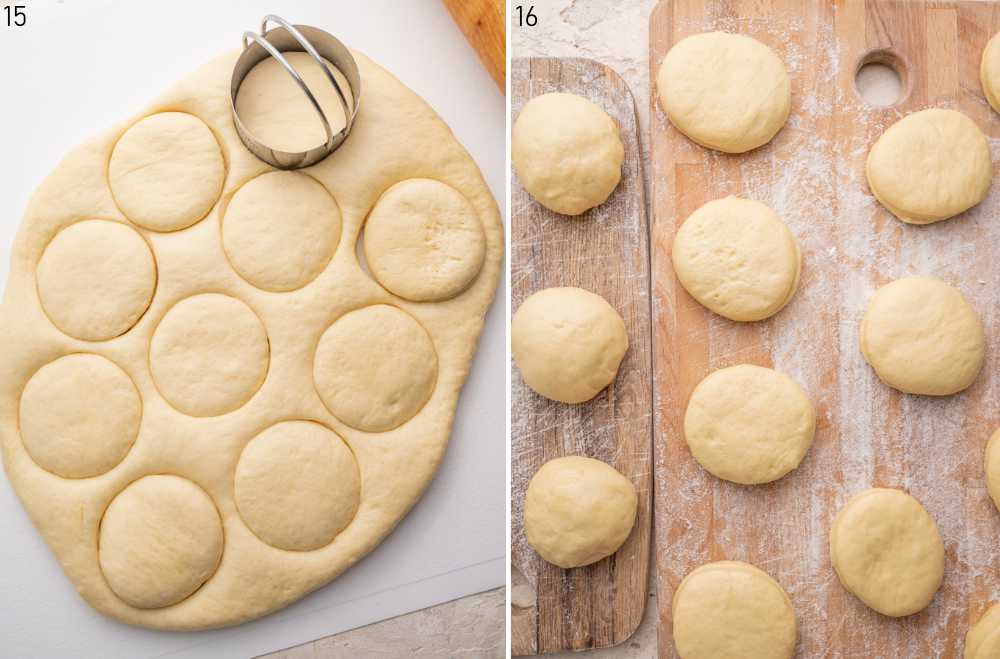
STEP 15: Transfer the dough to a lightly-floured rolling mat/counter and roll it out slightly to a thickness of 4/5 of an inch (2cm).
STEP 16: Cut out rounds using a 2 3/4 to 3-inch biscuit cutter (I used a 2 3/4 which is 7cm). You can knead the leftover dough into a ball, roll it out, and again cut out rounds or you can also simply divide the dough into 75g-pieces, and roll each piece of dough into a ball (such doughnuts will look a little bit nicer). This is shown on the video in this pączki recipe! (a similar recipe to this).
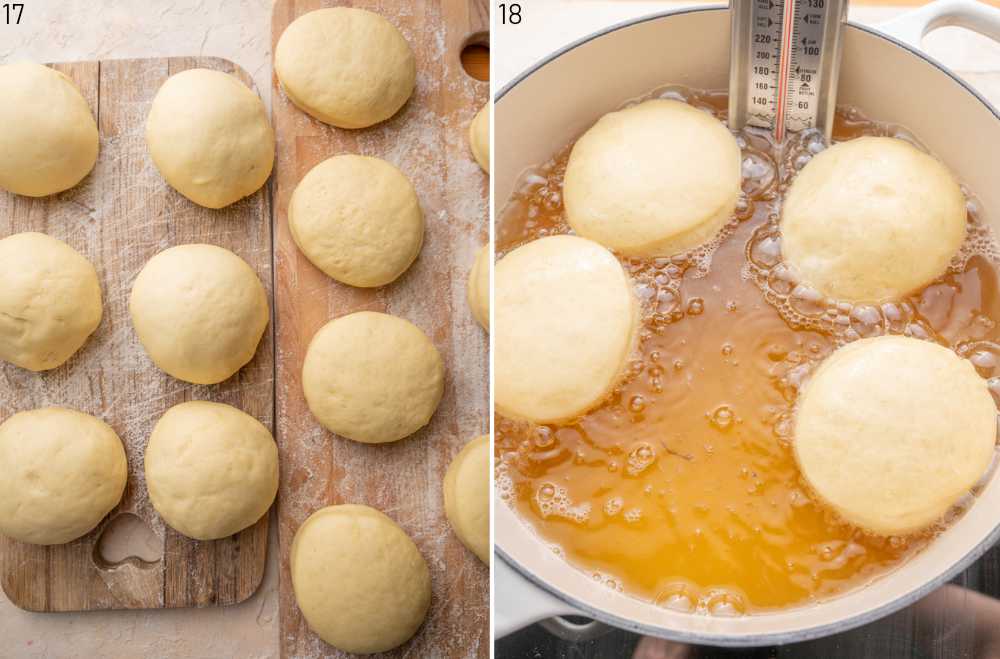
STEP 17: Second rise: Place pieces of dough on a lightly floured piece of parchment paper or wooden board, about 2-inches (5cm) apart. Cover loosely with a clean kitchen towel or a piece of plastic foil. Let rise for 30-45 minutes or until noticeably puffed up.
STEP 18: Fry doughnuts: Heat the oil in a large pot (preferably shallow and wide) until the temperature reaches 340°F (170°C). It’s best to use a candy thermometer which can be attached to a pot or a digital grill thermometer to check the temperature for the whole frying process. The amount of oil will depend on the size of the pot, you should have at least 1 1/2 inches (4cm) oil in your pot.
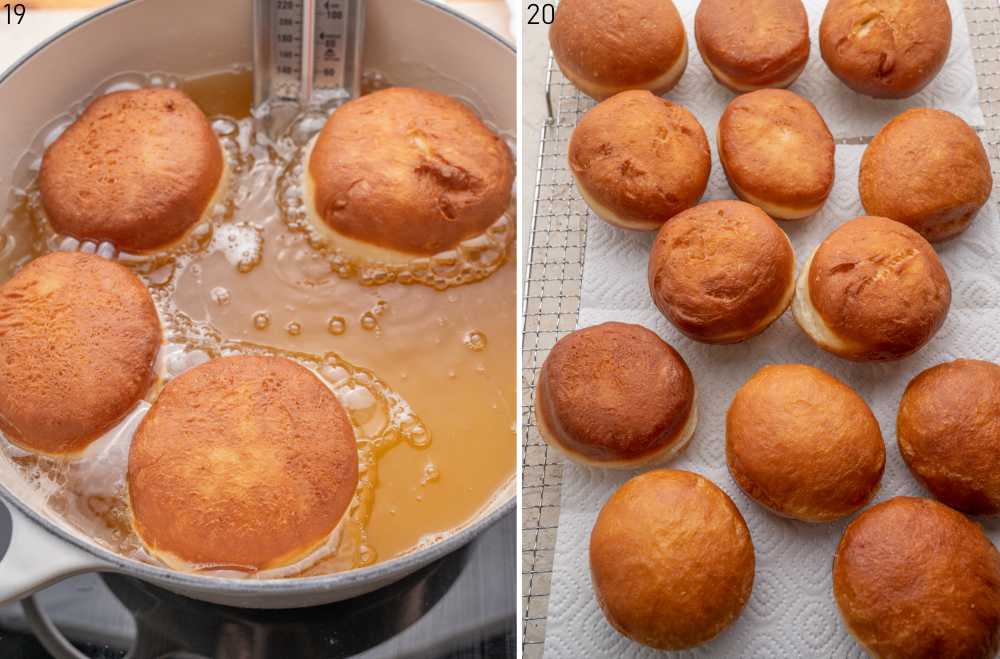
STEP 19: Fry doughnuts in batches (3-5 donuts at a time, depending on the size of the pot). Gently lower the doughnuts into the oil, I like to pick them up and slide them off of a lightly floured bench scraper.
It’s important to control the temperature of the oil – if it’s too hot, doughnuts will brown too quickly and will be raw in the middle, if it’s too low, they will soak up fat and be dense and greasy. Fry doughnuts for about 1.5 – 2 minutes per side or until golden (about 4 minutes in total).
STEP 20: Transfer to a plate lined with paper towels to drain excess fat.
Let the doughnuts cool completely before filling them with pastry cream.
Make the chocolate glaze
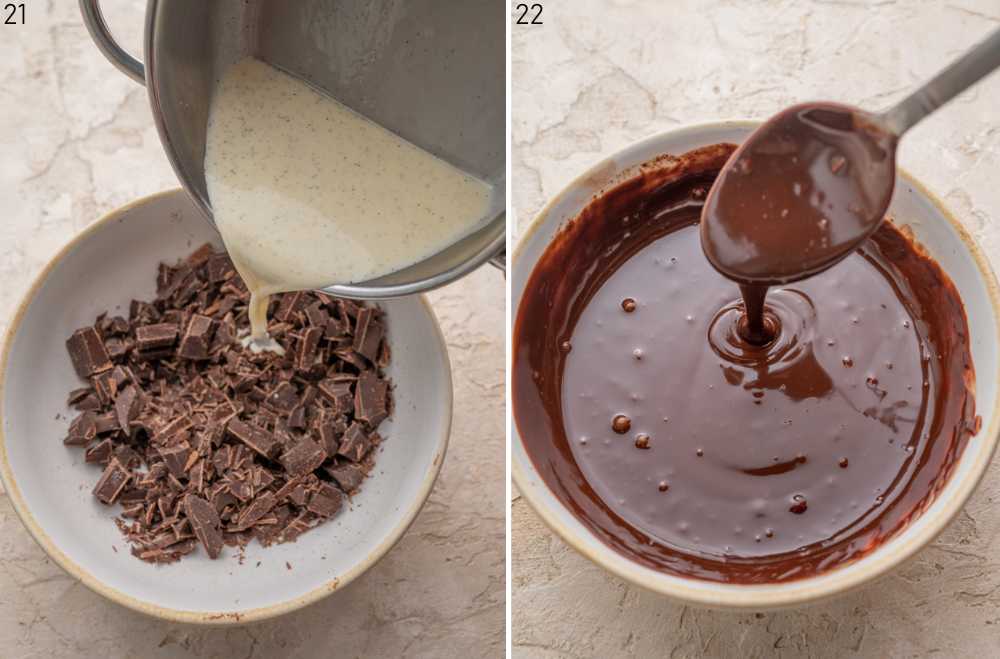
STEP 21+22: Chop the chocolate and add to a medium bowl. Heat the cream with salt and vanilla. When hot add to the chocolate and stir until melted.
Assemble
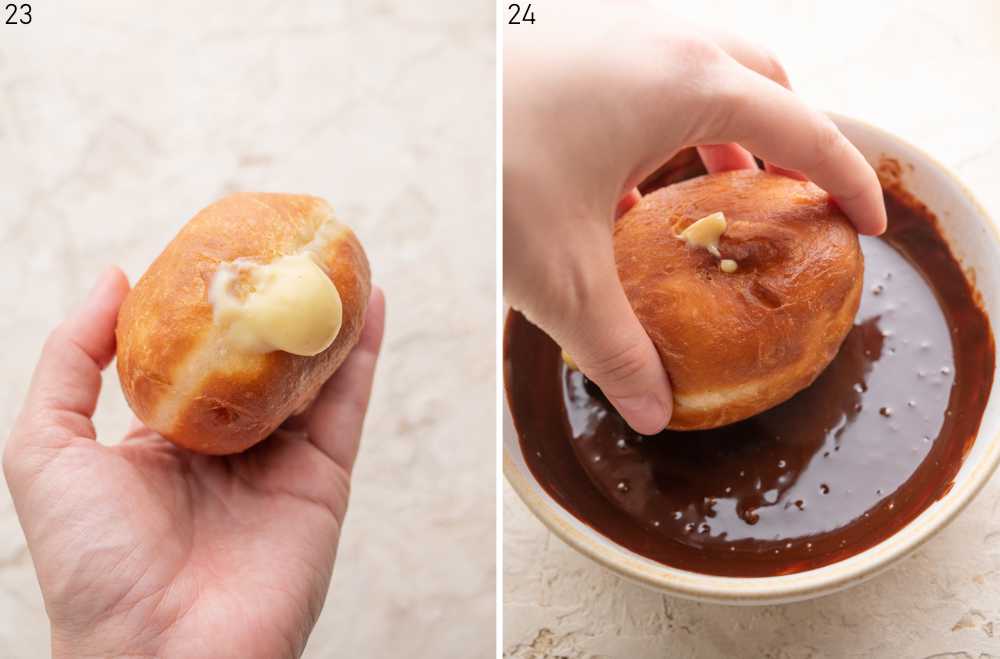
STEP 23: Fill cooled doughnuts with pastry cream: Use a straw to make a tunnel for the filling, fill a piping bag fitted with a long round piping tip with the filling and pipe the cream into the donuts.
STEP 24: Glaze the doughnuts: Dip one side of the doughnuts in the chocolate glaze. Leave to set.
Enjoy!
Storage
These donuts are best on the day they were made. They also also good the next day but are not as fluffy on the inside and crispy on the outside like freshly made. They are far more dense. Because they are filled with pastry cream, they should be kept in the fridge for up to 4 days. I left them once on the counter (in winter) for the whole day and they were fine but I wouldn´t recommend that (wrapped tightly in plastic foil).
If you plan on eating them the next day, it would be better not to glaze them (just the donuts you plan on eating on the day of making them). Reheat in the oven until just slightly warm then glaze.
If you have glazed donuts that you´d like to eat the next day and you have store them in the fridge – reheat them at the lowest temperature in the oven (it´s 125°F / 50°C for me) until just slightly warm. The glaze will be just slightly runny and the donuts will be fine. You can also just leave them on the counter for 1-2 hours until they come to the room temperature.
I have not tried freezing these donuts but I think it´s not a good idea.
How to store pastry cream: You can make the pastry cream for up to 4 days in advance! Store in the fridge topped with a piece of plastic foil that lays directly on the cream.
How to store chocolate ganache: You can also make the ganache 1-3 days in advance. You will need to reheat it until runny before glazing the donuts (it will thicken in the fridge).
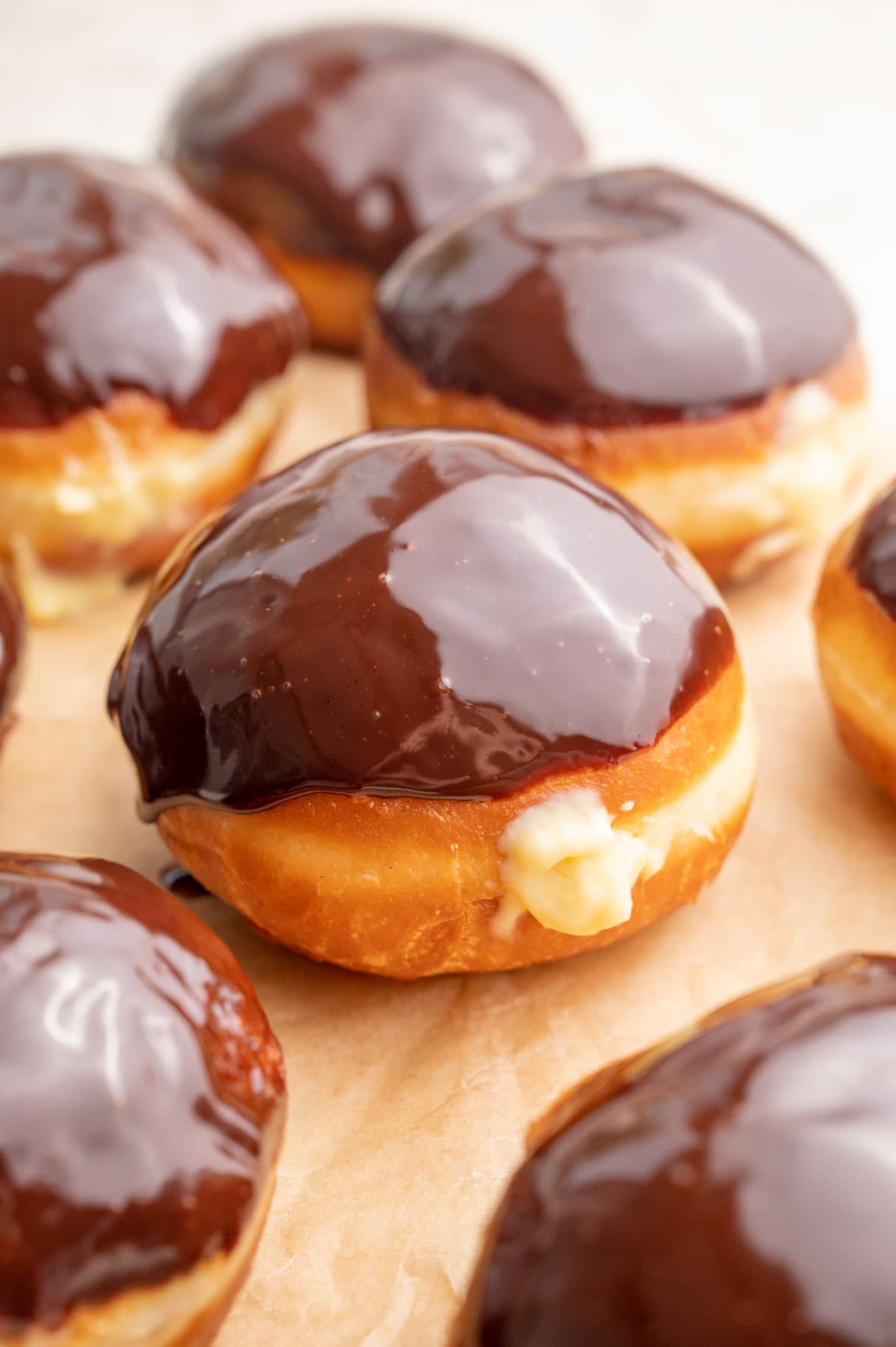
Did you make this recipe? RATE THE RECIPE or tell me in the COMMENTS how you liked it! You can also add a photo of your dish. It would make me very happy and will help other readers. Thank you!!
Boston Cream Donuts
Ingredients
for the doughnut dough:
- 1 cup (240g) milk
- 1/4 cup (50g) granulated sugar
- 1 tablespoon + 1 teaspoon (11g) instant yeast
- 6 tablespoons (85g) butter, melted and slightly cooled
- 2 large eggs
- 1 tablespoon vanilla extract
- 1/2 teaspoon salt
- 4 1/4 cups (530g) all-purpose flour spooned and leveled, not scooped
for the vanilla pastry cream:
- 4 large egg yolks
- 1/4 cup (35g) corn starch
- 1/2 cup (100g) sugar
- pinch of salt
- 1 tablespoon vanilla extract/paste or 2 vanilla beans
- 1 3/4 cups (450g) milk
- 2 tablespoons (30g) butter
for the chocolate glaze:
- 4 ounces (115g) chocolate, I used 1 oz milk chocolate and 3 oz bittersweet chocolate
- 1/4 cup + 2 tablespoons 90ml heavy cream
- 1 teaspoon vanilla extract
- pinch of salt
Would you like to save this?
Instructions
Make the dough:
- Warm up the milk to 100-110°F (38-43°C), add sugar and yeast. Leave for about 5-10 minutes or until you see foam on top of the mixture (a sign the yeast is working).
- Add butter, eggs, vanilla extract, and salt to a large bowl, whisk until combined.
- Add the yeast mixture and flour, stir with a spoon until roughly combined.
- Knead the dough by hand of with a stand mixer using a dough hook attachment. Knead the dough until soft and elastic. It will take about 7 minutes on speed 2 in Kitchen Aid or about 15 minutes by hand. If kneading the dough by hand you can find the mixture too sticky, try not to add too much additional flour. After 7 minutes of kneading with a mixer, you will see that the dough starts to clean off the sides of the bowl, it will be very soft and just a little bit sticky. Scrape the dough from the sides of the bowl with a spatula and knead it by hand for a minute. After this time the dough should be smooth, soft and should no longer stick to your hands. If you have used a kitchen scale to measure out the flour you can trust the recipe and use the exact amount written in the ingredient list but if you’re using measuring cups you have to assess the texture of the dough and add more flour/liquid if necessary.
- First rise: Form a smooth dough ball, put it back in the bowl (make sure the bowl is large enough for the dough to double or even triple in volume). Coat the bowl and the dough lightly with a small amount of vegetable oil, cover the bowl tightly with plastic foil, and place in a warm place for about 1 to 1 1/2 hours or until doubled in volume (I'm putting it in a turned off oven with a light on).
- While the dough is rising, prepare the pastry cream.
Make pastry filling:
- Add the egg yolks, corn starch, vanilla and salt to a medium bowl and whisk until thoroughly combined (there should be no lumps of corn starch or egg yolks).
- Heat the milk in a medium/large pot until simmering but not boiling.
- Pour about 1/2-1cup of the milk to the egg yolk mixture slowly in a thin stream while whisking intensely at the same time.
- When the milk is well combined with the egg yolk mixture add it back to the remaining milk in the pot.
- Bring to a boil then cook over medium-low heat for 2-3 minutes, stirring often, or until thickened (the cream will continue to thicken while cooling down).
- Transfer the cream to a bowl. Place a plastic foil or a piece of parchment paper on top of the cream – it should touch the surface of the cream – it will prevent forming a skin. Cool down a bit (about 30 minutes) then put in the fridge to cool down completely.
Fry the doughnuts:
- Transfer the dough to a lightly-floured rolling mat/counter and roll it out slightly to a thickness of 4/5 of an inch (2cm). Cut out rounds using a 2 3/4 to 3-inch biscuit cutter (I used a 2 3/4 which is 7cm). You can knead the leftover dough into a ball, roll it out, and again cut out rounds or you can also simply divide the dough into 75g-pieces, and roll each piece of dough into a ball (such doughnuts will look a little bit nicer).
- Second rise: Place pieces of dough on a lightly floured piece of parchment paper or wooden board, about 2-inches (5cm) apart. Cover loosely with a clean kitchen towel or a piece of plastic foil. Let rise for 30-45 minutes or until noticeably puffed up.
- Fry doughnuts: Heat the oil in a large pot (preferably shallow and wide) until the temperature reaches 340°F (170°C). It's best to use a candy thermometer which can be attached to a pot or a digital grill thermometer to check the temperature for the whole frying process. The amount of oil will depend on the size of the pot, you should have at least 1 1/2 inches (4cm) oil in your pot.
- Fry doughnuts in batches (3-5 donuts at a time, depending on the size of the pot). Gently lower the doughnuts into the oil, I like to pick them up and slide them off of a lightly floured bench scraper.
- It's important to control the temperature of the oil – if it's too hot, doughnuts will brown too quickly and will be raw in the middle, if it's too low, they will soak up fat and be dense and greasy. Fry doughnuts for about 1.5 – 2 minutes per side or until golden (about 4 minutes in total).
- Transfer to a plate lined with paper towels to drain excess fat.
- Let the doughnuts cool completely before filling them with pastry cream.
Make chocolate glaze:
- Chop the chocolate and add to a medium bowl.
- Heat the cream with salt and vanilla. When hot add to the chocolate and stir until melted.
Assemble:
- Fill cooled doughnuts with pastry cream: Use a straw to make a tunnel for the filling, fill a piping bag fitted with a long round piping tip with the filling and pipe the cream into the donuts.
- Glaze the doughnuts: Dip one side of the doughnuts in the chocolate glaze. Leave to set.
- Enjoy!
Notes
- If using vanilla bean and not vanilla extract/paste: cut the vanilla bean in half lengthwise and scrape out the seeds using the tip of a knife. Add all the beans and vanilla pods to the milk. Warm up the milk to almost a simmer then take of the heat. Let steep for 20 minutes. Discard the vanilla pods. Use the vanilla milk in the recipe.
- The whole process of making doughnuts is shown on the video in this recipe post for pączki (Polish donuts – they are very similar to this recipe! take a look if you need a visual for the doughnuts making process).
-
How to measure flour: Fluff the flour by stirring it in the bag/flour container with a spoon. Spoon the flour and sprinkle it into your measuring cup. Sweep off the excess flour with the back of a knife. It´s best to use a kitchen scale to measure out the ingredients for best and consistent results!
- Calories = 1 donut (1/14 of the recipe). This is only an estimate!


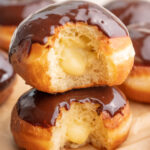
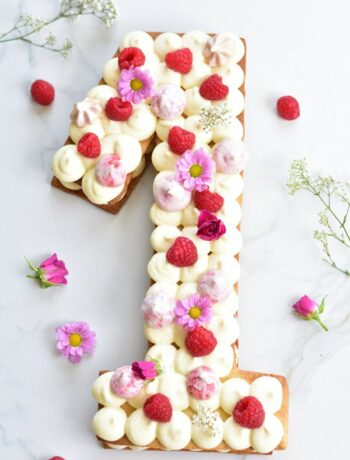

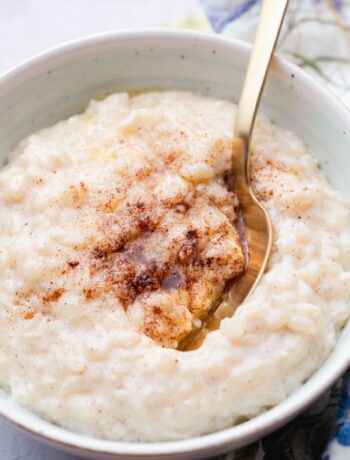
No Comments